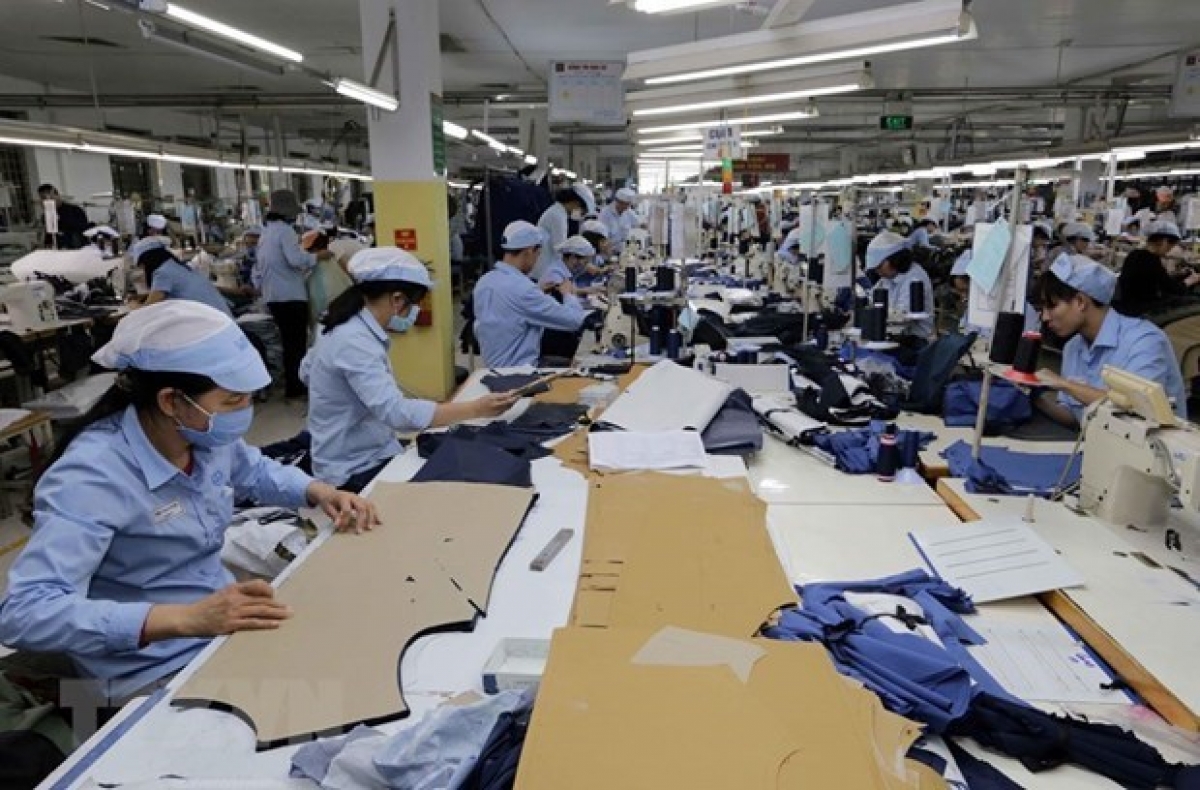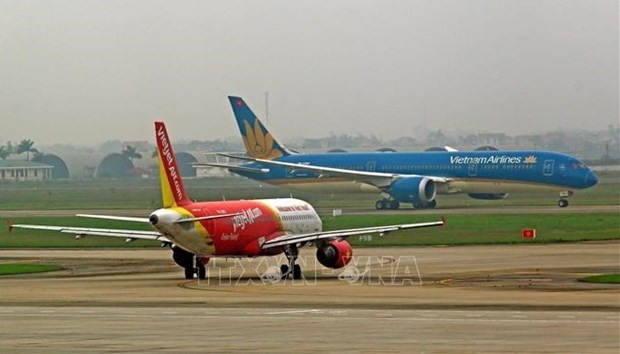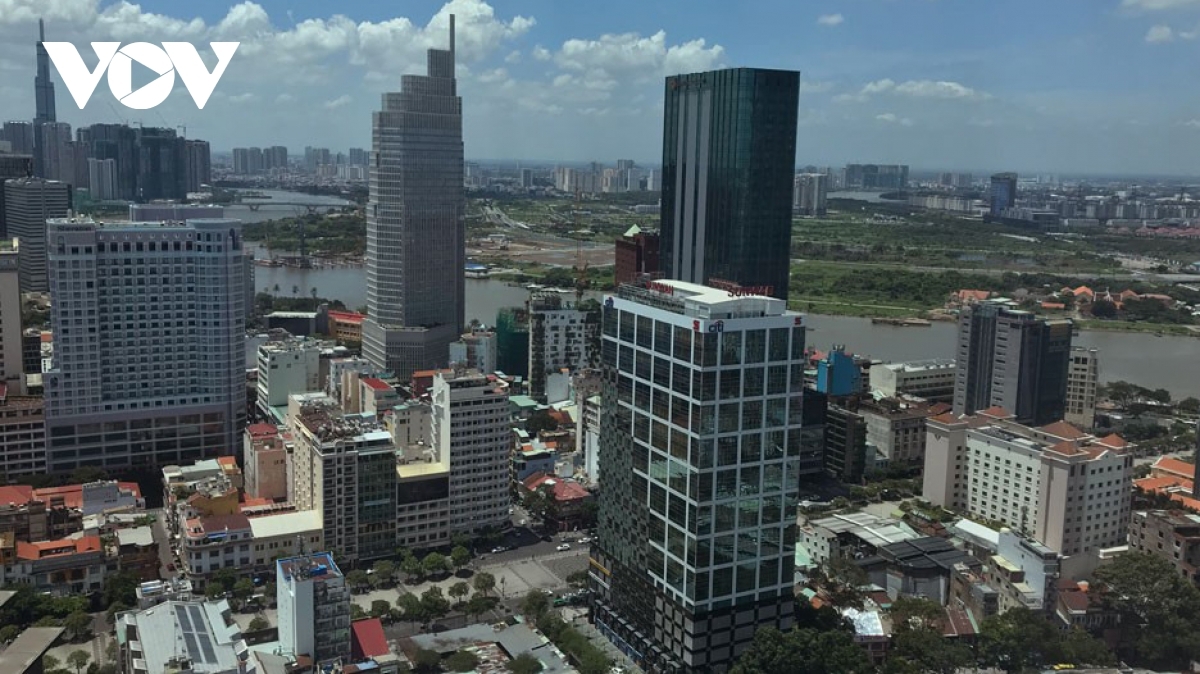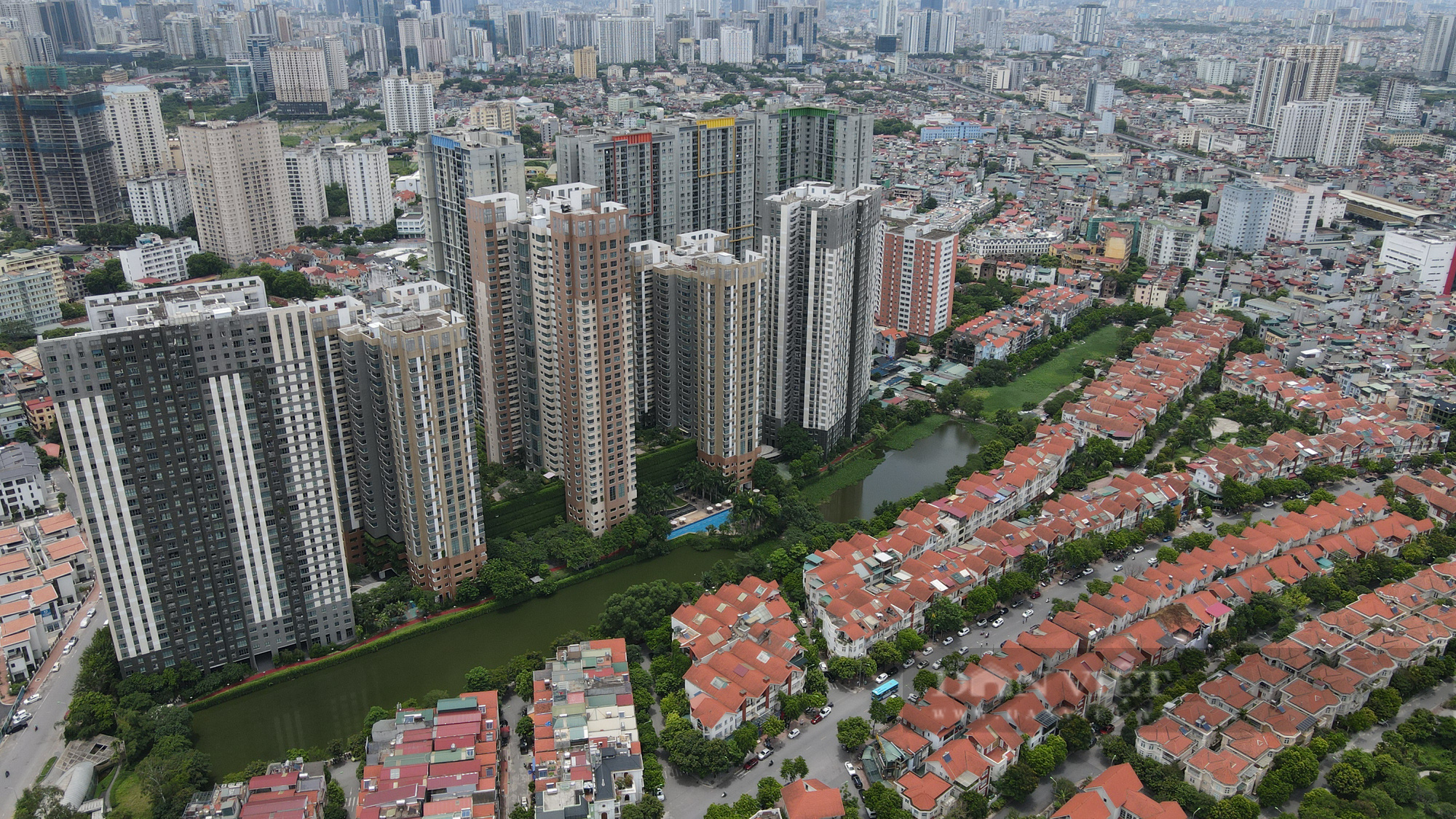
With 17 free trade agreements (FTAs) whose negotiations have been completed or underway, Vietnam has become an open economy with a trade to GDP ratio of up to 200%.
According to the Agency of Foreign Trade under the Ministry of Industry and Trade (MoIT), Vietnamese firms have maximised advantages to boost exports and penetrate into new markets.
The country’s total export-import value rose from US$84.7 billion in 2006 to US$545.3 billion last year. In the first 10 months of this year, the figure was US$537.31 billion.
Vietnam has always recorded a trade surplus, from US$1.77 billion in 2016, to US$2.1 billion in 2017, US$6.8 billion in 2018, US$10.9 billion in 2019 and US$19 billion in 2020.
The structure of exports has been improved significantly, with the turnover of processed industrial goods increasing from 80.3% in 2016 to 85.1% in 2019 and 85.2% last year.
Deputy Minister of Industry and Trade Tran Quoc Khanh cited a report by the WTO last year as saying that among the top 50 merchandise traders, Vietnam recorded the biggest increase in the world's rankings, leaping from the 39th place in 2009 to the 23rd position in 2019.
The numbers reflect that Vietnam is an open economy after joining the WTO and seriously realising its commitments, he stressed.
Moreover, the signing and implementation of FTAs have helped the country attract more foreign direct investment (FDI), creating momentum for the national economy, the official added.
Ngo Chung Khanh, Deputy Direrector of the MoIT’s Multilateral Trade Policy Department, said apart from reducing administrative procedures, the ministry will continue with the communication work to raise domestic firms’ awareness of the FTAs.
Notably, the ministry will speed up the building of the FTA Portal (FTAP), he said, adding that more than 20 ministries and agencies will join a working group to operate and upgrade the portal.
Deputy Minister Khanh affirmed that Vietnam will further promote trade policies comprehensively and synchronously to boost economic development in tandem with sustainable development.
Vietnam will work harder to effectively implement the present international commitments and FTAs, while seeking potential partners to conduct negotiations on new FTAs, thereby helping to expand trade ties in the future, he said.
Vietnam's e-commerce forecast to surpass 11.8 billion USD
Vietnamese e-commerce market is forecast to continue growing in the post-pandemic period, with revenue surpassing last year's figure, according to experts.

Illustrative image. (Photo: congthuong.vn)
The experts revealed the information at a workshop held recently on the future of the Vietnamese digital economy within the framework of Techfest Vietnam 2021, reported VNA.
E-commerce revenue in Vietnam hit 11.8 billion USD last year, posting a growth rate of 18 percent.
Nguyen Thi Thanh Thuy, head of e-commerce division of Voso E-commerce Platform, said that the Vietnamese e-commerce market recorded the fastest growth rate in Southeast Asia.
E-commerce is expected to continue booming after the COVID-19 pandemic is controlled, creating new consumption trends. The demand for online purchases through e-commerce platforms has increased sharply since the outbreak of the pandemic.
Up to now, more than 70 percent of Vietnam's population have accessed the Internet, of which nearly 50 percent of consumers have tried online shopping and 53 percent of them have used e-wallets and online payment.
Thuy said that consumers' habits have completely changed during the pandemic, as they have reduced shopping activities and instead they have focused on essential goods and been interested in Vietnamese commodities.
Tran Chi Dung, Head of Technology-Innovation Division of the Vietnam Logistics Business Association, said that a change in shopping habits has created great opportunities for e-commerce to develop. However, Vietnam's e-commerce still faces many challenges such as consumer trust when buying online products, forms of delivery and payment, information security and transportation infrastructure.
Le Thi Mai Anh, Head of the E-commerce Postal Sales Department at Vietnam Post, said the rapid growth of the market is forecast to continue in the future. This growth will not only bring about major opportunities but also challenges for the development of logistics platforms to meet the increasing demand of customers and the market.
Logistics enterprises for e-commerce are also facing a low rate of information technology application in e-commerce logistics, she said.
Currently, only about 11 percent of businesses are applying basic information technology related to tracking and tracing goods, delivery and warehousing systems. Another challenge is the absence of a legal framework for e-commerce logistics, Anh said./.
Plan on resumption of international flights proposed
The Civil Aviation Authority of Vietnam (CAAV) has proposed the Ministry of Transport a plan to resume international flights, including combo flights for Vietnamese citizens in routes connecting Vietnam with Japan, the Republic of Korea, Taiwan (China), Singapore Thailand, Malaysia, France, Germany, Russia, and Australia, reported VNA.

In the first phase of the plan, routes connecting Vietnam with Japan, the Republic of Korea, Taiwan (China), Singapore Thailand, Malaysia, France, Germany, Russia, and Australia will be resumed (Photo: VNA)
In the first phase, operations of flights to other markets will be re-open when there is demand for labour transport, according to the plan.
The frequency of the flights will depend on the quarantine capacity of localities, it said, adding that flights will only be allowed after agreements on receiving and quarantine plans are reached with the localities.
The CAAV also proposed the launching of pilot flights to carry foreign tourists to some tourist destinations like Phu Quoc, Khanh Hoa and Quang Ninh. The flights will not be limited by markets, but all passengers must show negative RT-PCR/RT-LAMP testing results against SARS-CoV-2 which is valid within 72 hours until the departure time of the first flight in their journey to Vietnam.
They should also be fully vaccinated against COVID-19 or show certificates of recovering from COVID-19 within six months. They are required to register for package tours provided by travel firms.
There will be one flight per day on the average, with about 4,000-6,000 passengers served in the first month. The number of flights will be doubled in the following month.
In the second phase from January next year, the CAAV proposed piloting regular flights that will only serve passengers who are fully vaccinated against COVID-19 or have recovered from the disease. No document-based acceptance for their entrance is required.
Initially, four flights per leg will be operated each week on air routes between Vietnam and China, Hong Kong (China), Japan, the Republic of Korea, Taiwan (China), Thailand, Singapore, Malaysia, France, Russia, Australia and other safe countries without recommendations of travel restrictions. The CAAV will suggested new markets as well as number of flights in line with the real situation.
Meanwhile, in the third phase from April 2022, depending on the vaccination progress in Vietnam and the evaluation on herd immunity, regular flights to Vietnam will be resumed. Passengers on flights need not go to quarantine upon arrival, as vaccine passports are in place.
In this phase, Vietnamese and foreign passengers are required to show their vaccination certificate or evidence of recovery from COVID-19. The markets will be opened following the demand of airlines, with seven flights per leg allowed for each airlines per week.
In the final phase slated from July 2022, international flights will be operated in line with the market demand and the vaccination progress in Vietnam as well as the herd immunity in society./.
Real estate market attracts more than US$2 billion in FDI
Vietnam’s real estate market has attracted US$2.12 billion in foreign direct investment (FDI) over the past 10 months, ranking third among sectors attracting FDI this year, according to the Ministry of Planning and Investment, reported VOV.

Vietnam's real estate market remains attractive
to foreign investors despite the COVID-19 impact. (Source: VOV)
The amount made up 9% of the total FDI Vietnam has attracted in the reviewed period.
There were 44 newly licensed projects with a registered capital of nearly US$1.1 billion. Seventeen projects registered to adjust their capital worth nearly US$116 million, while, nearly US$912 million was generated from share purchase.
The General Statistics Office reports the number of newly established businesses in the real estate sector remains modest compared to other sectors.

Photo for illustration (Source: danviet.vn)
Statistics show more than 5,900 real estate businesses have been established since the beginning of the year, up 7.8% year on year. In addition, the number of real estate businesses resuming operation has also increased by 13.8% to 1,161.
Notably, the past few months has seen a rise in merger and acquisition transactions between foreign and domestic real estate businesses.
Most recently, Nishi Nippon Railroad acquired Nam Long Investment Joint Stock Company’s stock at Paragon Dai Phuoc Company Limited, signaling that the real estate market is gradually improving in Vietnam./.